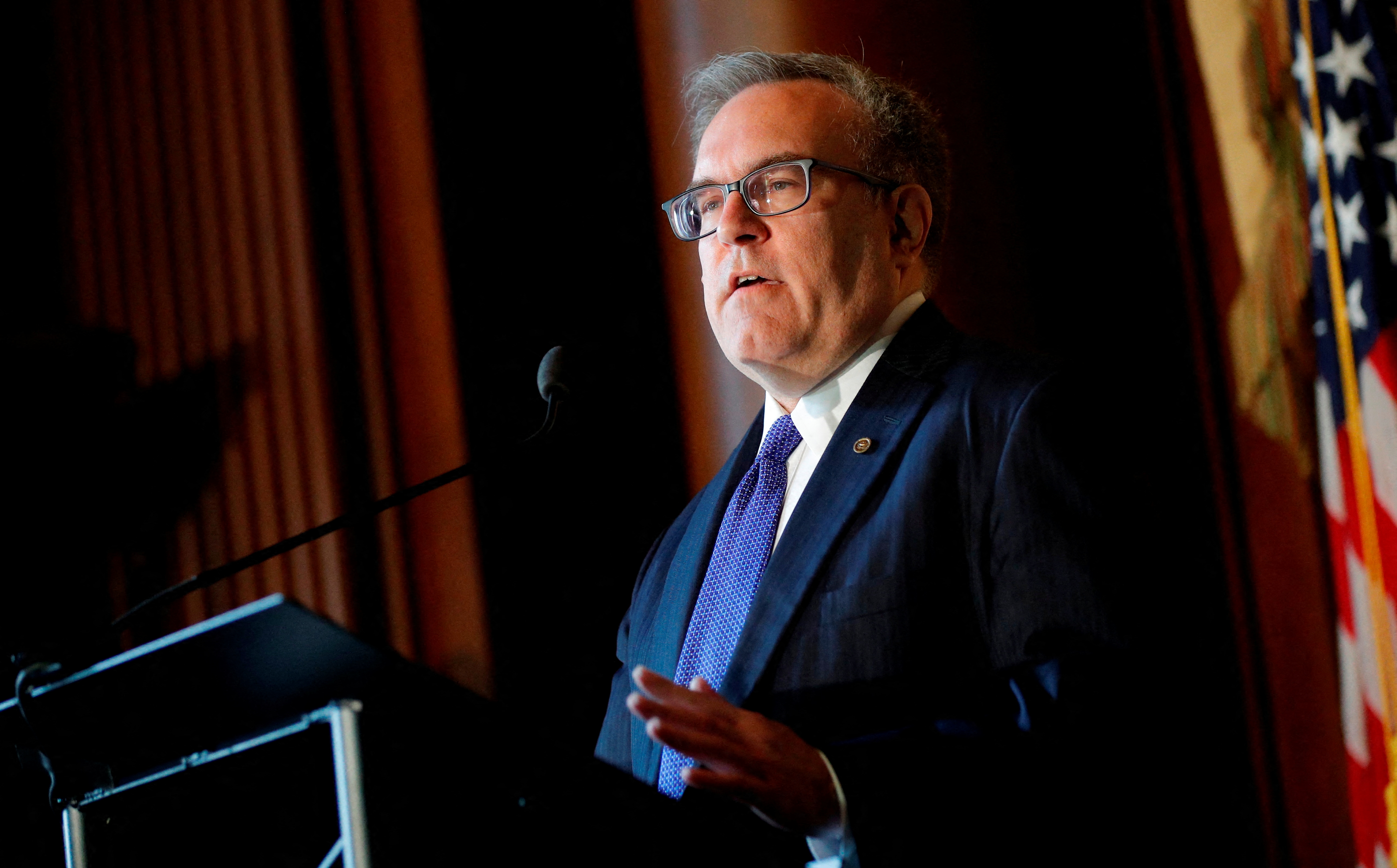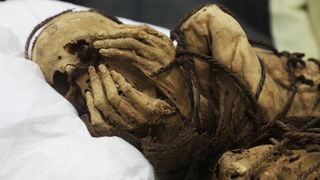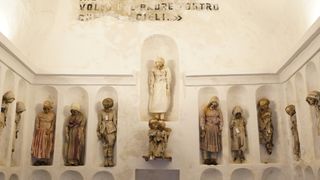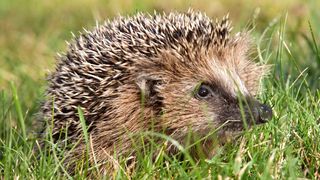UPDATED
Kazakhstan elites flee the country
At least eight private business jets, according to Flight Radar, took off from Kazakhstan in the morning of Wednesday, January 5, amid mass protests, looting of the government buildings and reports of security forces joining the protesters.
According to Ateo Breaking, among others, a Bombardier Global 500 with registration number 9H-AVA, belonging to the husband of Dinara Nazarbayeva, the daughter of the country's first president Nursultan Nazarbayev, who after his resignation in 2019 retained the title of Elbasy (leader of the nation) and the post of chairman of the National Security Council, flew from Almaty in the direction of Kyrgyzstan.
On Wednesday, Kazakh President Kassym-Jomart Tokayev said he has become the head of the Security Council, which remained silent for four days as protests escalated from local unrest in the west of the country into a nationwide uprising.
Nazarbayev himself is ready to leave Kazakhstan for medical treatment, said the editor-in-chief of Echo of Moscow Alexei Venediktov, citing a source in the Russian Foreign Ministry.
Tokayev, who twice addressed the nation, issued a third statement on Wednesday in which he said he would remain in the capital Nur-Sultan and intended to act "as harshly as possible" to suppress the protests, which he said were planned by a group of conspirators.
RIA Novosti reported, citing its sources, that Russia has not yet seen any reason to think about the evacuation of Tokayev himself. "We do not believe that the situation is so bad that it would require such a radical step. Our data does not support this information," he said.
Nevertheless, at about 15.00 Moscow time, the plane of the Rossiya airline serving the Russian government took off from Moscow. The Tu-214 with registration number RA 64251 was heading towards Kazakhstan, but did not have time to land, because the Almaty airport was seized by protesters. The airport of the city of Aktau also does not work, the national carrier Air Astana told the Mir 24 TV channel.
Telegram channels and social networks were filled with rumors that a delegation of Russian security forces headed by the Secretary of the Security Council Nikolai Patrushev was sent to Kazakhstan. However, the special aircraft of the FSB - Tu-214PU with registration number RA-64523, which was sent to Belarus in August 2020 under similar circumstances, is still in Vnukovo airport in Moscow, according to FlightRadar.
The Kremlin has officially stated that there was no need to interfere in the events in Kazakhstan, which is part of both the Eurasian Economic Union (EAEU) and the Collective Security Treaty Organization (CSTO) military bloc.
"We are convinced that our Kazakh friends can independently solve their internal problems," Russian presidential spokesman Dmitry Peskov said on Wednesday. The Russian Foreign Ministry expressed support for President Kassym-Jomart Tokayev, but at the same time called the protesters' demands "legitimate".
The European Union called on all parties to "show responsibility and refrain from actions that could lead to an escalation of violence."
"Recognizing the right to peaceful demonstrations, the European Union expects them to take place without violence" and "calls on the authorities to be proportionate in the use of force in protecting security and to comply with international obligations," the EU statement reads.
Civil Unrest in Kazakhstan: Developing Situation
By Rebecca Lougheed
A State of Emergency Declared
Early on January 5, the President declared a state of emergency. There were also curfews put in place across Almaty city, from 11pm to 7am.
Unrest and lawlessness have been reported throughout the country, particularly in its cities.
There are reports of riots in Almaty where protestors have seized control of the UAAA/Almaty airport. It is now closed (UAAA Notam K0094/22 refers). Cars have been set on fire in the carpark. All flights there have been cancelled, along with those at UATE/Mangystau.
There is likely to be significant security risks on the ground – police resources are currently very limited. Movement between cities is also being restricted. The US Embassy there is warning citizens to avoid large groups of people and to stay away from areas where protests are taking place.
A local agent has advised that the “airport authority is currently uncontactable” at Almaty airport to provide any updates on the situation (Jan 5 18:30z).
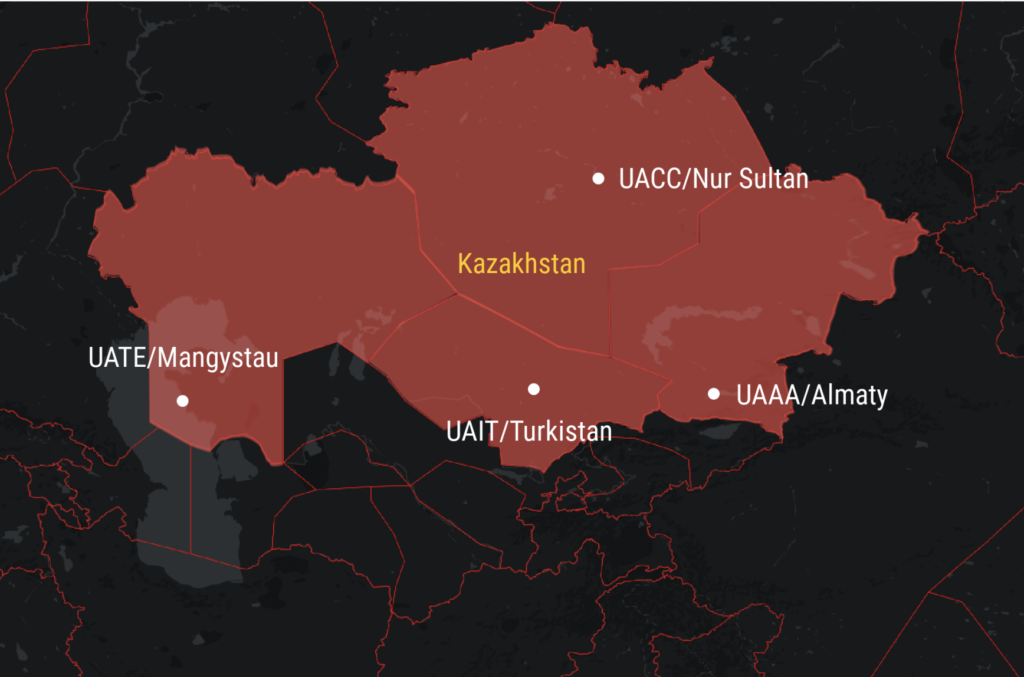
Kazakhstan is a Central Asian country extending from the Caspian Sea and bordering China and Russia.
Overflights
At the time of writing, no Notams have been issued indicating that overflights are affected. However the situation is volatile and could potentially lead to ATC disruptions. Keep a close eye on things if operating in the region. It may also be worth familiarising yourself with TIBA contingency procedures.
The situation is developing
We’ll continue to update this article with any important changes as they come to hand.
One other thing: fuel
We have previously reported on rumours of fuel issues across Kazakhstan – particularly for GA flights operating to UAAA/Almaty, UACC/Nur-Sultan and UAKK/Karagandy. Initially agents at airports advised this was not the case, but later informed us that fuel was only available to airline flights and locally registered charter operators. Foreign registered non-scheduled flights would be unable to uplift fuel. The official word is that you need prior permission from airport authorities to take any on.
Russia-led alliance sending peacekeepers to Kazakhstan
By JIM HEINTZ
1 of 17
MOSCOW (AP) — A Russia-led military alliance said Thursday that it will dispatch peacekeeping forces to Kazakhstan after the country’s president asked for help in controlling protests that escalated into violence, including the seizure and setting afire of government buildings.
Protesters in Kazakhstan’s largest city stormed the presidential residence and the mayor’s office Wednesday and set both on fire, according to news reports, as demonstrations sparked by a rise in fuel prices escalated sharply in the Central Asian nation.
Police reportedly fired on some protesters at the residence in Almaty before fleeing. They have clashed repeatedly with demonstrators in recent days, deploying water cannons in the freezing weather, and firing tear gas and concussion grenades.
The Kazakh Interior Ministry said eight police officers and national guard members were killed in the unrest and more than 300 were injured. No figures on civilian casualties were released.
President Kassym-Jomart Tokayev appealed to the Collective Security Treaty Organization, a Moscow-based alliance of six former Soviet countries, for assistance. Hours later, the CSTO’s council approved sending an unspecified number of peacekeepers, said Armenian Prime Minister Nikol Pashinyan, the council’s chairman.
Tokayev earlier vowed to take harsh measures to quell the unrest and declared a two-week state of emergency for the whole country, expanding one that had been announced for both the capital of Nur-Sultan and the largest city of Almaty that imposed an overnight curfew and restricted movement into and around the urban areas.
The government resigned in response over the unrest. Kazakh news sites became inaccessible late in the day, and the global watchdog organization Netblocks said the country was experiencing a pervasive internet blackout. The Russian news agency Tass reported that internet access was restored in Almaty by early Thursday.
Although the protests began over a near-doubling of prices for a type of liquefied petroleum gas that is widely used as vehicle fuel, their size and rapid spread suggested they reflect wider discontent in the country that has been under the rule of the same party since gaining independence from the Soviet Union in 1991.
Tokayev claimed the unrest was led by “terrorist bands” that had received help from unspecified other countries. He also said rioters had seized five airliners in an assault on Almaty’s airport, but the deputy mayor later said the airport had been cleared of marauders and was working normally.
Kazakhstan, the ninth-largest country in the world, borders Russia to the north and China to the east and has extensive oil reserves that make it strategically and economically important. Despite those reserves and mineral wealth, discontent over poor living conditions is strong in some parts of the country. Many Kazakhs also chafe at the dominance of the ruling party, which holds more than 80% of the seats in parliament.
Hours after thousands of demonstrators gathered outside the presidential residence in Almaty, Tass reported that it was on fire and that protesters, some wielding firearms, were trying to break in. Police fled from the residence after shooting at demonstrators, according to the report, which was filed from Kazakhstan.
Many of the demonstrators who converged on the mayoral office carried clubs and shields, according to earlier reports in Kazakh media. Tass later said the building was engulfed in flames.
Protesters also broke into the Almaty office of the Russia-based Mir television and radio company and destroyed some equipment, the broadcaster said. It later reported that a crowd broke into the Almaty building of the Kazakh national broadcaster.
The protests began Sunday in Zhanaozen, a city in the west where government resentment was strong in the wake of a 2011 strike by oil workers in which police fatally shot at least 15 people. They spread across the country in the following days, and on Tuesday large demonstrations broke out in Nur-Sultan and in Almaty, the former capital.
The protests appear to have no identifiable leader or demands. Many of the demonstrators shouted “old man go,” an apparent reference to Nursultan Nazarbayev, the country’s first president who continued to wield enormous influence after his 2019 resignation.
In an earlier televised statement to the nation, Tokayev said that “we intend to act with maximum severity regarding law-breakers.”
He also promised to make political reforms and announced that he was assuming the leadership of the national security council. The latter is potentially significant because the council had been headed by Nazarbayev, who was president from 1991 until he resigned in 2019.
Nazarbayev dominated Kazakhstan’s politics and his rule was marked by a moderate cult of personality. Critics say he effectively instituted a clan system in government.
After the demonstrations spread to Nur-Sultan and Almaty, the government announced its resignation, but Tokayev said the ministers would stay in their roles until a new Cabinet is formed, making it uncertain whether the resignations will have significant impact.
At the start of the year, prices for the gas called LPG roughly doubled as the government moved away from price controls as part of efforts to move to a market economy.
Kazakhstan: What's behind the unrest?
Kazakhstan is experiencing the heaviest unrest in its history. Russia's second most important ally in the post-Soviet realm was known as stable for a long time, so what happened?
DW has the background.
Kazakhstan is a close post-Soviet ally for Russia
On Sunday, several hundred residents of Zhanaozen, a town in western Kazakhstan, took to the streets to protest high prices for liquefied petroleum gas, also known as autogas, a popular type of fuel. The protest wave has since spread across the entire country, with thousands joining street marches.
Demonstrators have also taken to the streets ofAlmaty, the former capital. A presidential palace was torched. There have been reports of protesters storming municipal buildings, police vehicles set on fire, armed officers out on patrol, shots and even explosions.
Watch video 01:38 A closer look at Kazakhstan’s recent history
In a surprise move, President Kassym-Jomart Tokayev on Wednesday vowed to address the issues driving the unrest. The acting government has resigned; President Tokayev has declared a state of emergency in the worst-hit regions of the country.
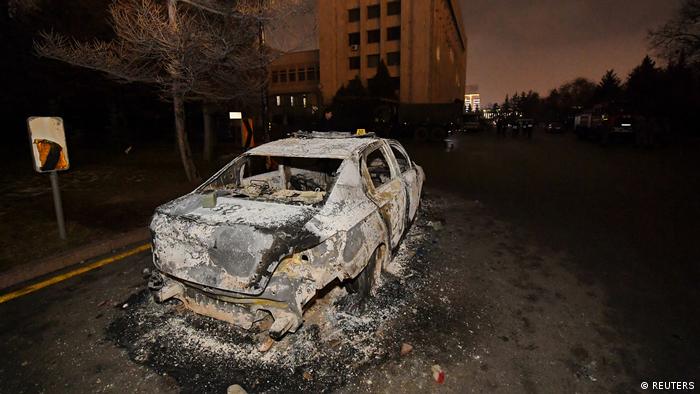
Petrol prices have roughly doubled, leading to protesters torching cars
While the situation on the ground remains unclear, one thing is clear — never before has Kazakhstan, long considered a stable autocracy, found itself engulfed in a political crisis of such proportions. Its repercussions will likely be felt far and wide. Kazakhstan, after all, is a former Soviet republic that maintains very close ties to Russia.
Rising prices and shortages
The latest protest wave originated in Zhanaozen where,10 years ago, fierce unrest erupted after oil workers went on strike. Over a dozen people were killed when authorities cracked down on the protests. The country's reputation as a peaceful and only moderately autocratic nation had taken a hit.
Watch video01:38 Kazakhstan's government resigned in response to unrest
While low wages sparked the 2011 unrest, this time, Zhanaozen residents took to the streets over a steep rise in autogas prices. Used by many to power their cars, the gas has doubled in prince in the new year. The government, which has now resigned, said the increase resulted from a rise in demand and production shortages.
Kazakhstan has long faced a number of problems, especially in the energy sector. Last year, for instance, Kazakhstan failed to generate sufficient electricity, leading to emergency shutdowns. The country had to rely on Russia to compensate the power outages. Now, Kazakhstan is planning to build its first nuclear power plant.
Kazakhstan's old and new capital
The cost of food has risen so drastically that last autumn, the government issued a ban on exporting cattle and other, smaller, livestock, as well as potatoes and carrots.
Three-decade reign ends
The current crisis comes at a time where Kazakhstan finds itself at a political crossroads. For three decades, Kazakhstan was governed by Nursultan Nazarbayev. During communist times, he served as prime minister of the Kazakh Soviet Socialist Republic, as well as chairman of the Communist Party of Kazakhstan.
He then ruled post-Soviet Kazakhstan as the country's first president. His authoritarian reign left a mark on the country. But Nazarbayev also managed to attract Western investments in the oil and gas sector and thereby generate a certain wealth for his people. Nazarbayev also moved the capital from Almaty in the country's south near Kyrgyzstan to the city of Astana, which was renamed Nur-Sultan in his honor.
The 81-year-old was the longest-serving ruler in the post-Soviet world when he announced his resignation in March 2019. Nazarbayev has cited health problems as one reason for leaving office, though observers suspect he was keen to secure his longterm legacy.

President Kassym-Jomart Tokayev has declared an emergency
68-year-old Kassym-Jomart Tokayev succeeded Nazarbayev at the helm, though until recently, the latter retained key positions in the country. Indeed, ex-President Nazarbayev continued to head the powerful security council and the ruling Nur Otan party.
It was only in November 2021 that he handed over party leadership to Tokayev. On Wednesday, he also took over as head of the security council.
Moscow concerned by unrest
Nazarbayev's idea of a gradual handover of power is in jeopardy. Many other former Soviet republics will be closely following the latest events unfolding. And so will Russia.
Kazakhstan is Russia's second closest Eurasian ally after Belarus. After Belarus was rocked by dissident protests in 2020, Kazakhstan is the second ally to experience similar turmoil. Russia maintains close political and economic relations with both.
Watch video 04:16 Almaty is 'in chaos' – Journalist Aigerim Toleukhanova speaks to DW
In 2010, Russia, Belarus and Kazakhstan established the Eurasian Customs Union, an ambitious project spearheaded by Russian President Vladimir Putin. In 2015, the club was upgraded into a full economic union, with Armenia and Kyrgyzstan joining as well.
Russian President Vladmir Putin and Nazarbayev are on close terms. They last met in December at the summit of post-Soviet states in St Petersburg, Russia.
So far, Moscow has kept itself out of the Kazakhstan crisis. Its Foreign Ministry, however, has called for dialogue. Moscow took a similar approach with Belarus, and later sent police officers to crush the protests. It is unclear if Moscow act in a similar way in Kazakhstan.
This article was originally written in German.
Kazakhstan president confirms takeover of Almaty airport
The entire country is under a state of emergency as unrest over rising fuel prices turns deadly. President Tokayev has called for help from the CSTO, a post-Soviet military alliance which includes Russia.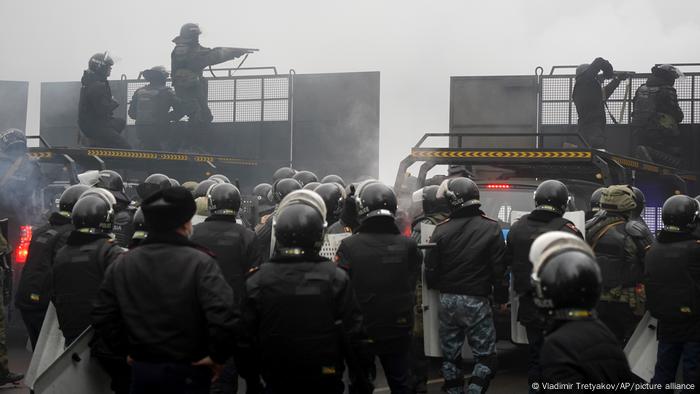
A heavy police presence deployed on Wednesday amid renewed protests, even as authorities tried to calm people with concessions
Kazakhstan President Kassym-Jomart Tokayev said Almaty airport had been seized by what he described as "terrorists" on Wednesday evening.
He also said five airplanes had been hijacked.
"Terrorist gangs are seizing large infrastructure facilities, in particular in the Almaty airport, five planes, including foreign planes," he said. "Almaty has been attacked, destroyed and vandalized."
He also said he had appealed for help to the Collective Security Treaty Organization (CSTO), a military alliance of Russia, Belarus, Armenia, Kazakhstan, Kyrgyzstan, and Tajikistan.
The Kazakh interior ministry said eight security forces' members were killed. No figures were released on civilian casualities.
Earlier on Wednesday Tokayev warned there would be a "tough" response to unrest that continued to rock the central Asian country.
Watch video 01:38 Kazakhstan's government resigned in response to unrest
What has Tokayev said so far?
"I appeal to the citizens of Kazakhstan, whether they are residents of the capital, residents of Almaty and other cities, who have become victims of terrorist aggression. I want to assure you that I will do everything possible, as president of the Republic of Kazakhstan, to protect your interests, vital interests, and I think we will win together," Tokayev said on Wednesday evening, in an address that was aired on state channels.
He stressed that "this is a very difficult page in the history of the state."
"Many things have to be studied — how it happened and why. But the main thing now is to protect our country, to protect our citizens," Tokayev concluded.
Earlier in the day, in a message shared among Russian media, Tokayev said: "There have been deaths and injuries. The situation threatens the security of all residents of Almaty, and that cannot be tolerated."
Watch video04:16 Almaty is 'in chaos' – Journalist Aigerim Toleukhanova speaks to DW
There have been violent clashes between security forces and demonstrators demanding an end to spiking fuel prices, with a residence of Tokayev's in the capital being set on fire, according to local media.
Tokayev, meanwhile, has taken control of the country's powerful security council from his presidential predecessor Nursultan Nazarbayev.
Elsewhere in Kazakhstan, in the cities of Alma-Ata and Aktau, some police units took the side of the protesters, according to DW Russian.
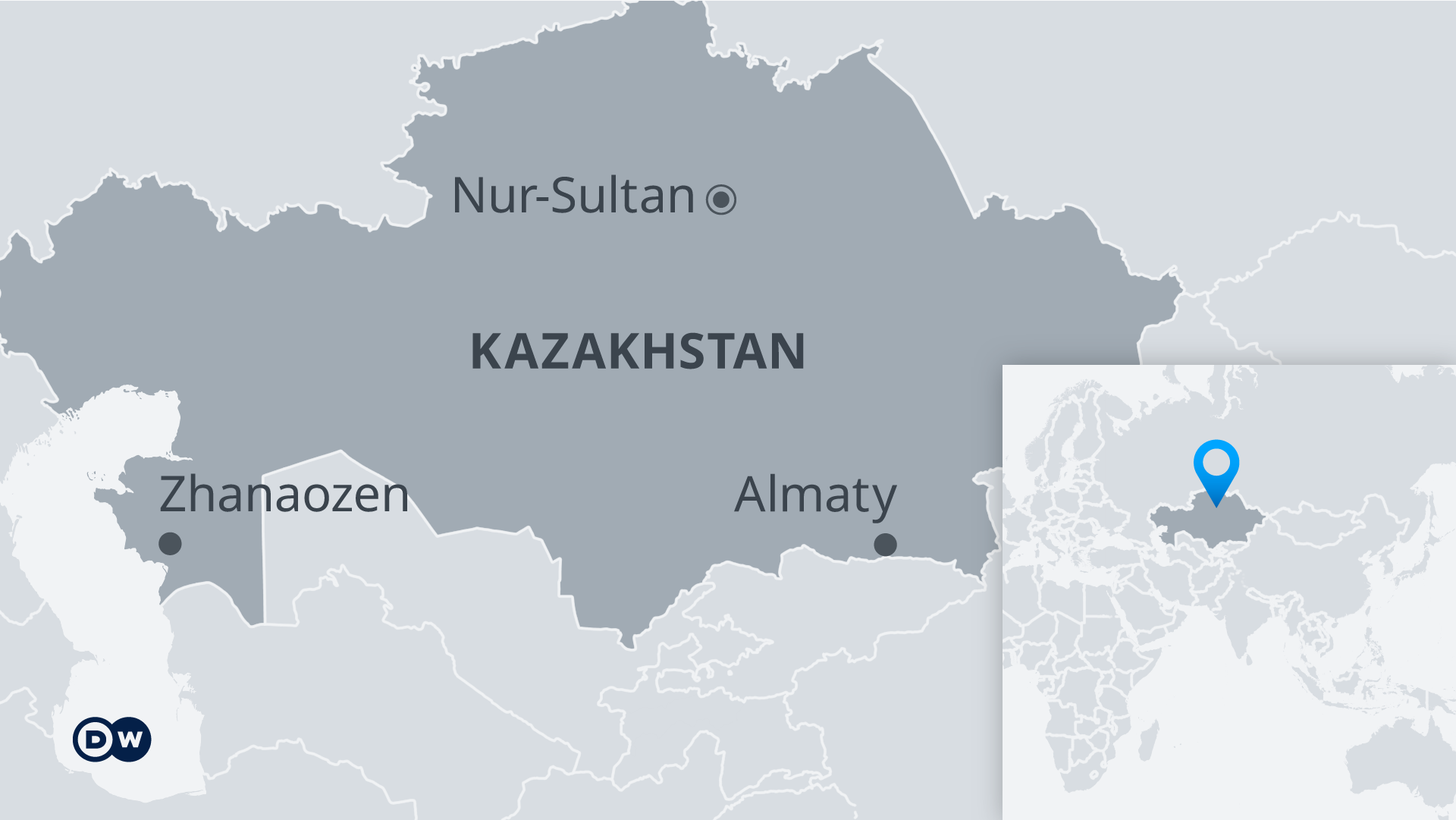
Rising fuel prices spark unrest
Though the unrest was triggered by the price rises, there were signs of broader political demands in a country still under the shadow of three decades of Nazarbayev's rule.
He stepped down as president in 2019 but retained authority as ruling party boss and head of a powerful security council.
Kazakh protesters torch public buildings
Also on Wednesday, demonstrators broke into the mayor's office in Almaty, Kazakhstan's largest city.
The demonstrators who convened on the office in Almaty were carrying clubs and shields, according to the Kazakh news site Zakon. Police fired stun grenades and tear gas at the crowd as people pushed through metal barricades in the street.
On January 1, prices for liquefied petroleum gas (LPG), which is used to power many vehicles as it has been kept cheaper than gasoline, roughly doubled as the government concluded a shift away from price controls.
The move has prompted repeated demonstrations in both Almaty and the capital Nur-Sultan.
Prime Minister Askar Mamin's government has resigned and Tokayev declared a state of emergency in Almaty, imposing an overnight curfew and limiting access to the city. Kazakhstan also reimposed temporary caps on LPG prices. The emergency measure was extended to the entire country later on Wednesday.
Watch video 03:11 Thousands protest across Kazakhstan - DW's Emily Sherwin reports from Moscow
Meanwhile, the United States has refuted Russian accusations that Washington had instigated the unrest. White House press secretary Jen Psaki said the suggestion was "absolutely false."
Police blame 'extremists' for clashes
Police Chief Kanat Taimerdenov said in a statement that "extremists and radicals" were behind the protests, accusing demonstrators of attacking at least 500 civilians and ransacking businesses.
National guard and army units have joined the police to secure the city, Taimerdenov said.
More than 200 people have been arrested and at least 95 police personnel have been injured in clashes, Kazakhstan's Interior Ministry said early on Wednesday.
jsi,lo,es/msh (AP, dpa, Reuters, AFP)
Kazakh president appeals to Russia-led security bloc for help against ‘terrorists’
Issued on: 05/01/2022
Kazakhstan's President Kassym-Jomart Tokayev said Thursday he had appealed to a Moscow-backed security alliance for help quelling protests across the ex-Soviet nation that he said were led by "terrorists".
The Central Asian country has been rocked by protests since the start of the year over a New Year fuel price hike that on Wednesday escalated into protesters clashing with police and storming government buildings.
"Today I appealed to the heads of CSTO (Collective Security Treaty Organisation) states to assist Kazakhstan in overcoming this terrorist threat," Tokayev said on state television early Thursday.
"In fact, this is no longer a threat," he added. "It is undermining the integrity of the state."
Moscow leads the CSTO security alliance, which includes five other ex-Soviet states.
Tokayev, who earlier imposed a nationwide state of emergency, said that terrorist groups — which he said "received extensive training abroad" – are "currently rampaging" across the country.
"They are seizing buildings and infrastructure and, most importantly, are seizing the premises where small arms are located," he said, adding that they had also seized five planes at the airport in the country's biggest city Almaty.
"There's currently a battle ongoing near Almaty with the air forces of the defence ministry, a stubborn battle," Tokayev claimed.
Kazakh media outlets reported that at least eight police officers and military servicemen were killed in the unrest.
They cited the interior ministry as saying 317 police and national guard servicemen were injured and eight killed "by the hands of a raging crowd".
(AFP)
Protests escalate in Kazakhstan; president’s home set ablaze
By JIM HEINTZ

1 of 17
MOSCOW (AP) — Protesters in Kazakhstan’s largest city stormed the presidential residence and the mayor’s office Wednesday and set both on fire, according to news reports, as demonstrations sparked by a rise in fuel prices escalated sharply in the Central Asian nation.
Police reportedly fired on some protesters at the residence in Almaty before fleeing. They have clashed repeatedly with demonstrators in recent days, deploying water cannons in the freezing weather, and firing tear gas and concussion grenades.
The Kazakh Interior Ministry said eight police officers and national guard members were killed in the unrest and more than 300 were injured. No figures on civilian casualties were released.
President Kassym-Jomart Tokayev vowed to take harsh measures to quell the unrest and declared a two-week state of emergency for the whole country, expanding one that had been announced for both the capital of Nur-Sultan and the largest city of Almaty that imposed an overnight curfew and restricted movement into and around the urban areas.
The government resigned in response to the unrest. Kazakh news sites became inaccessible late in the day, and the global watchdog organization Netblocks said the country was experiencing a pervasive internet blackout, but the Russian news agency Tass reported that internet access was restored in Almaty by early Thursday.
Although the protests began over a near-doubling of prices for a type of liquefied petroleum gas that is widely used as vehicle fuel, their size and rapid spread suggested they reflect wider discontent in the country that has been under the rule of the same party since gaining independence from the Soviet Union in 1991.
Tokayev said on state television shortly before midnight that he has called on other countries in the Collective Security Treaty Organization, an alliance of ex-Soviet states including Russia, for assistance in restoring order, but it was not clear what measures he had asked for.
He claimed the unrest was led by “terrorist bands” that had received help from unspecified other countries. He also said rioters had seized five airliners in an assault on Almaty’s airport; but the deputy mayor later said the airport had been cleared of marauders and was working normally.
Kazakhstan, the ninth-largest country in the world, borders Russia to the north and China to the east and has extensive oil reserves that make it strategically and economically important. Despite those reserves and mineral wealth, discontent over poor living conditions is strong in some parts of the country. Many Kazakhs also chafe at the dominance of the ruling party, which holds more than 80% of the seats in parliament.
Hours after thousands of demonstrators gathered outside the presidential residence in Almaty, Tass reported that it was on fire and that protesters, some wielding firearms, were trying to break in. Police fled from the residence after shooting at demonstrators, according to the report, which was filed from Kazakhstan.
Many of the demonstrators who converged on the mayoral office carried clubs and shields, according to earlier reports in Kazakh media. Tass later said the building was engulfed in flames.
Protesters also broke into the Almaty office of the Russia-based Mir television and radio company and destroyed some equipment, the broadcaster said. It later reported that a crowd broke into the Almaty building of the Kazakh national broadcaster.
The protests began Sunday in Zhanaozen, a city in the west where government resentment was strong in the wake of a 2011 strike by oil workers in which police fatally shot at least 15 people. They spread across the country in the following days, and on Tuesday large demonstrations broke out in Nur-Sultan and in Almaty, the former capital.
The protests appear to have no identifiable leader or demands.
In an earlier televised statement to the nation, Tokayev said that “we intend to act with maximum severity regarding law-breakers.”
He also promised to make political reforms and announced that he was assuming the leadership of the national security council. The latter is potentially significant because the council had been headed by Nursultan Nazarbayev, who was president from 1991 until he resigned in 2019.
Nazarbayev dominated Kazakhstan’s politics and his rule was marked by a moderate cult of personality. Critics say he effectively instituted a clan system in government.
After the demonstrations spread to Nur-Sultan and Almaty, the government announced its resignation, but Tokayev said the ministers would stay in their roles until a new Cabinet is formed, making it uncertain whether the resignations will have significant effect.
At the start of the year, prices for the gas called LPG roughly doubled as the government moved away from price controls — part of efforts to move to a market economy.
Kazakhstan protesters breach Almaty mayor's office
Local news sources have said that demonstrators stormed the building with clubs and shields. Almaty is under an official state of emergency over widespread protests against rising fuel prices.

A heavy police presence deployed on Wednesday amid renewed protests, even as
authorities tried to calm people with concessions
Protesters demanding an end to the country's spiking fuel prices broke into the mayor's office in Kazakhstan's largest city on Wednesday, as unrest continued to rock the central Asian country.
The demonstrators who convened on the office in Almaty were carrying clubs and shields, according to the Kazakh news site Zakon. Police fired stun grenades and tear gas at the crowd as people pushed through metal barricades in the street.
On January 1, prices for liquefied petroleum gas (LPG), which is used to power many vehicles as it has been kept cheaper than gasoline, roughly doubled as the government concluded a shift away from price controls.
The move has prompted repeated demonstrations in both Almaty and the capital Nur-Sultan.
Prime Minister Askar Mamin's government has resigned and President Kassym-Jomart Tokayev declared a state of emergency in Almaty, imposing an overnight curfew and limiting access to the city. Kazakhstan also reimposed temporary caps on LPG prices.
Police blame 'extremists' for clashes
Police Chief Kanat Taimerdenov said in a statement that "extremists and radicals" were behind the protests, accusing demonstrators of attacking at least 500 civilians and ransacking businesses.
National guard and army units have joined the police to secure the city, Taimerdenov said.
More than 200 people have been arrested and at least 95 police personnel have been injured in clashes, Kazakhstan's Interior Ministry said early on Wednesday.
es/msh (AP, dpa, Reuters)

MOSCOW (AP) — Demonstrators protesting rising fuel prices broke into the mayor’s office in Kazakhstan’s largest city Wednesday and flames were seen coming from inside, according to local news reports.

Many of the demonstrators who converged on the building in Almaty carried clubs and shields, the Kazakh news site Zakon said.

Riot police block demonstrators during a protest in Almaty, Kazakhstan, Wednesday, Jan. 5, 2022. Demonstrators denouncing the doubling of prices for liquefied gas have clashed with police in Kazakhstan's largest city and held protests in about a dozen other cities in the country. (AP Photo/Vladimir Tretyakov)
Protests against a sharp increase in prices for liquefied gas began this week in the country’s west.

Demonstrators, one of which holds a police ammunition, gather during a protest in Almaty, Kazakhstan, Wednesday, Jan. 5, 2022. Demonstrators denouncing the doubling of prices for liquefied gas have clashed with police in Kazakhstan's largest city and held protests in about a dozen other cities in the country. (AP Photo/Vladimir Tretyakov)
As the protests spread to Almaty and Kazakhstan’s capital, Nur-Sultan, the government resigned. President Kassym-Jomart Tokayev declared a state of emergency in Almaty, imposing an overnight curfew and limiting access to the city.

Demonstrators stand in front of police line during a protest in Almaty, Kazakhstan, Wednesday, Jan. 5, 2022. Demonstrators denouncing the doubling of prices for liquefied gas have clashed with police in Kazakhstan's largest city and held protests in about a dozen other cities in the country. (AP Photo/Vladimir Tretyakov)
At the start of the year, prices for the gas that is used to power many vehicles roughly doubled as the government concluded a shift away from price controls.

A police officer carries tear gas grenades during a protest in Almaty, Kazakhstan, Wednesday, Jan. 5, 2022. Demonstrators denouncing the doubling of prices for liquefied gas have clashed with police in Kazakhstan's largest city and held protests in about a dozen other cities in the country. (AP Photo/Vladimir Tretyakov)

Demonstrators with Kazakhstan's national flag march during a protest in Almaty, Kazakhstan, Wednesday, Jan. 5, 2022. Demonstrators denouncing the doubling of prices for liquefied gas have clashed with police in Kazakhstan's largest city and held protests in about a dozen other cities in the country. (AP Photo/Vladimir Tretyakov)

A riot police officer stands ready to stop demonstrators during a protest in Almaty, Kazakhstan, Wednesday, Jan. 5, 2022. Demonstrators denouncing the doubling of prices for liquefied gas have clashed with police in Kazakhstan's largest city and held protests in about a dozen other cities in the country. (AP Photo/Vladimir Tretyakov)

Riot police walk to block demonstrators during a protest in Almaty, Kazakhstan, Wednesday, Jan. 5, 2022. Demonstrators denouncing the doubling of prices for liquefied gas have clashed with police in Kazakhstan's largest city and held protests in about a dozen other cities in the country. (AP Photo/Vladimir Tretyakov)
The entry and exit from the Almaty Region will be restricted
NUR-SULTAN, January 5. / TASS /. Kazakhstan’s President Kassym-Jomart Tokayev has declared a state of emergency in the Almaty Region on January 5, the press service said on Wednesday.
"Amid a serious and immediate threat to the safety of citizens, in order to ensure public safety, restore law and order, protect the rights and freedoms of people, a state of emergency is introduced in the Almaty Region from January 5 to 19. A curfew <…> from 23:00 to 7:00 local time (from 20:00 to 04:00 Moscow Time) is also in effect," according to the president’s decree.
For this period, a commandant’s office is going to be established in the Almaty Region. "The restriction on freedom of movement <…> will be imposed. <…> The entry and exit from the Almaty Region will be restricted. The organization and holding of peaceful gatherings, entertainment, sport and other mass events is banned," the statement reads.
Furthermore, the sale of weapons, ammunition, explosives, special means and poisonous substances will be prohibited. Some special conditions will be applied for the circulation of medication, narcotic drugs, psychotropic substances and alcohol.
On January 2, crowds took to the streets in the cities of Zhanaozen and Aktau in the Mangistau region, protesting against high fuel prices. Two days later, the protests engulfed Almaty, where the police used flashbangs to disperse the crowd, as well as other cities, including Atyrau, Aktobe, Uralsk, Taraz, Shymkent, Kyzylorda, Karaganda and even Kazakhstan’s capital Nur-Sultan. The president imposed a two-week state of emergency and a curfew in the country’s largest city of Almaty and the southwestern Mangistau Province early on Wednesday. The head of the state also accepted the government’s resignation. Its members will continue to perform their tasks until a new cabinet is formed.
By Staff Reuters
Posted January 4, 2022
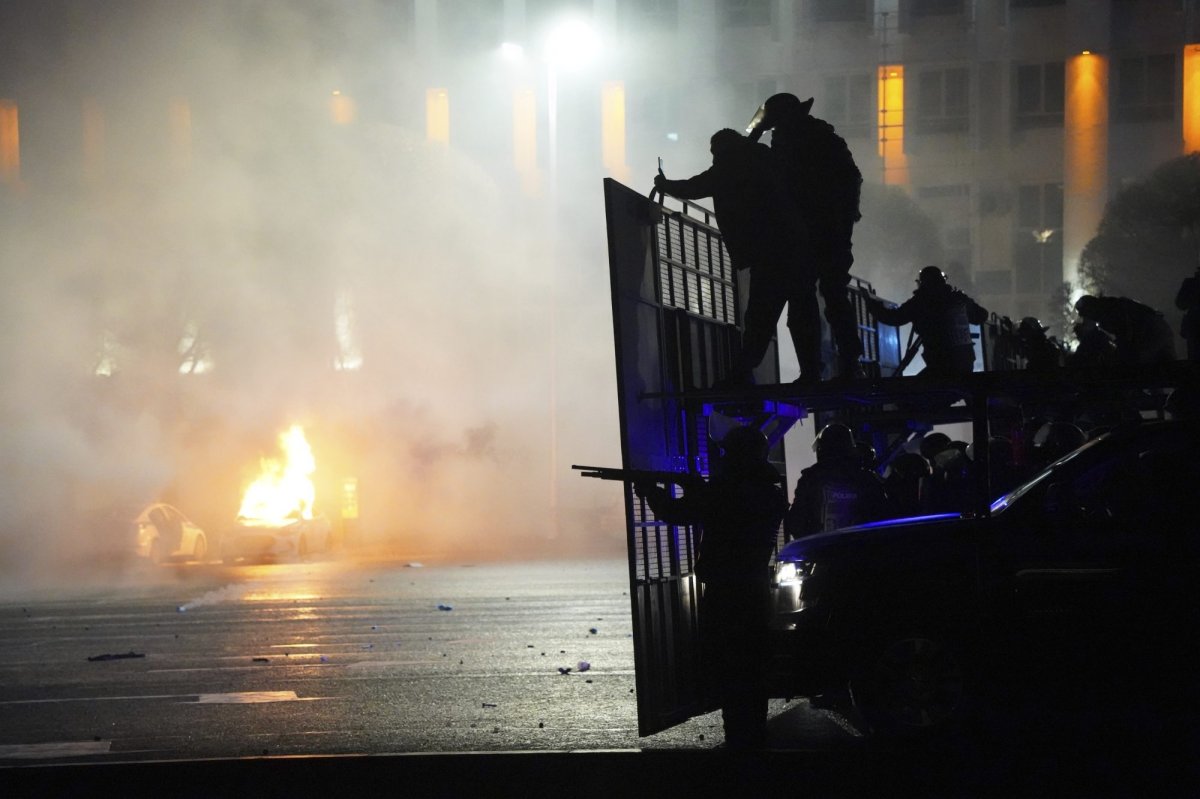
Kazakh President Kassym-Jomart Tokayev accepted the government’s resignation on Wednesday, his office said, after violent protests triggered by a fuel price increase rocked the oil-rich Central Asian country.

Police used tear gas and stun grenades late on Tuesday to drive hundreds of protesters out of the main square in Almaty, the former Soviet republic’s biggest city, and clashes went on for hours in nearby areas.
The protests shook the former Soviet republic’s image as a politically stable and tightly-controlled nation — which it has used to attract hundreds of billions of dollars of foreign investment into its oil and metals industries over three decades of independence.
Tokayev declared a state of emergency in Almaty and the oil-producing western Mangistau province early on Wednesday and has said that domestic and foreign provocateurs were behind the violence.
READ MORE: Protesters in Kazakhstan dispute legitimacy of early presidential election
The protests began in Mangistau province on Sunday following the lifting of price caps on liquefied petroleum gas, a popular car fuel, a day earlier, after which its price more than doubled.
Speaking to acting cabinet members on Wednesday, Tokayev ordered them and provincial governors to reinstate LPG price controls and broaden them to gasoline, diesel and other “socially important” consumer goods.
He also ordered the government to develop a personal bankruptcy law and consider freezing utilities’ prices and subsidising rent payments for poor families.
He said the situation was improving in protest-hit cities and towns after the state of emergency was declared which effected a curfew and movement restrictions.
(Reporting by Olzhas Auyezov; Editing by Kim Coghill, Robert Birsel and Michael Perry)
© 2022 Reuters

